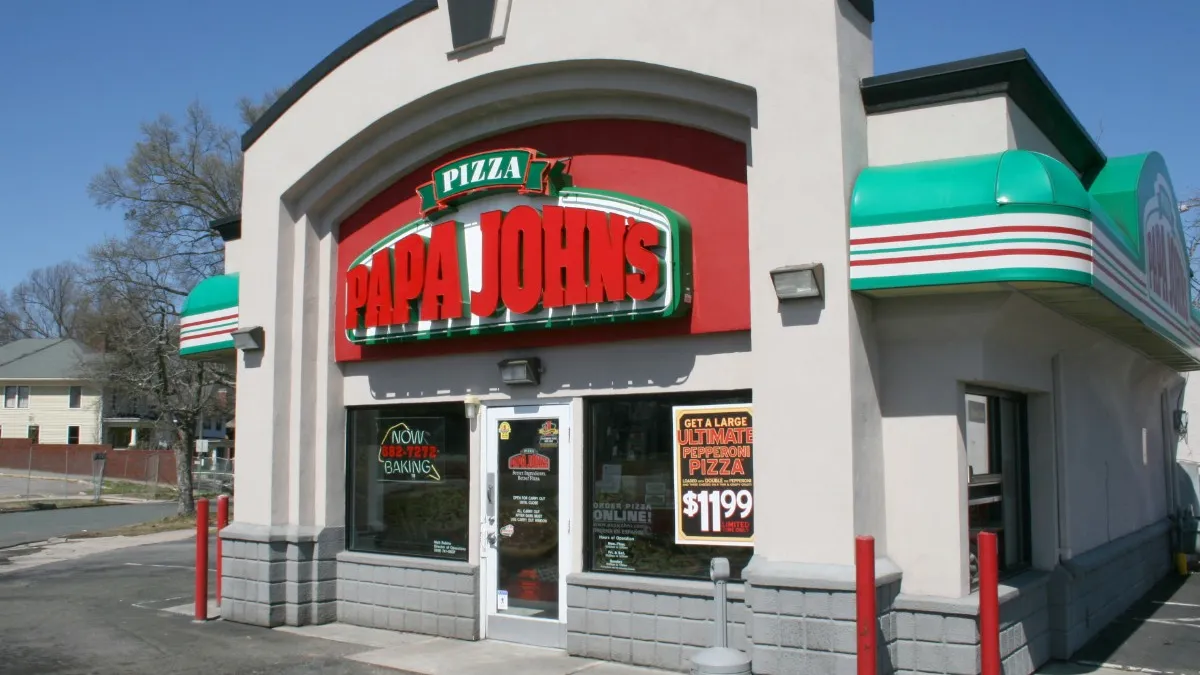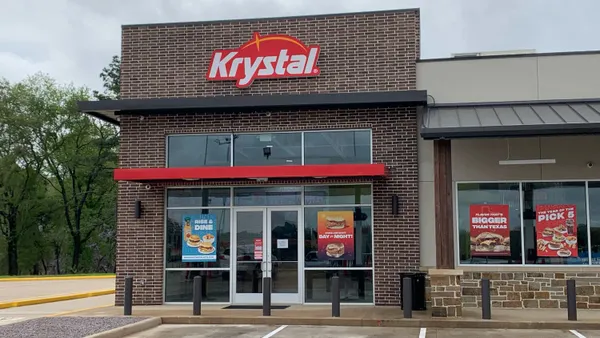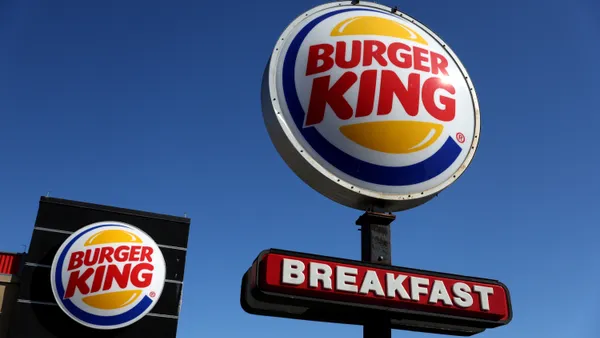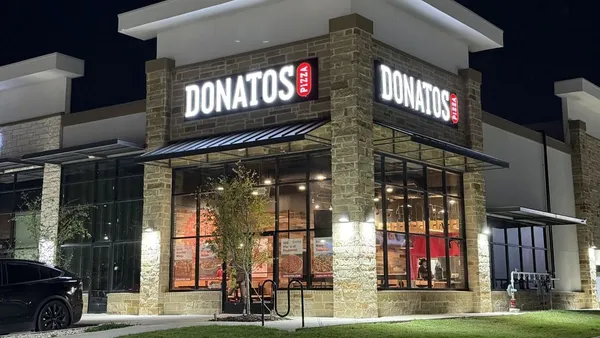Dive Brief:
- Papa John's reported a revenue increase of 17% year-over-year to $472.9 million for Q3 and a net income of $15.7 million for the period, according to a company release Thursday, exceeding Wall Street expectations. Comparable sales rose nearly 24% year-over-year in North America, marking the fifth consecutive quarter of comparable sales growth for the chain.
- The chain has also thrown significant support behind its franchisees to optimize efficiencies — Q3 marked the last quarter of its "We Win Together" franchisee support program that put $80 million toward its operator network, Ann Gugino, Papa John's CFO, said during an earnings call on Thursday.
- Papa John's has also experienced an increase in interest from potential franchisees amid the pandemic, CEO Rob Lynch said on a call with investors, adding that the chain has more white space opportunity than rivals with significantly more restaurants in the ground.
Dive Insight:
Papa John's steady sales gains amid pandemic disruption, and its plans to take advantage of real estate freed up by recent restaurant closures, is attracting lucrative operators, Lynch said. Restaurant margin growth, which Lynch said has increased dramatically over the past six months thanks to new customer acquisition and the success of menu innovation like the Papadias and Shaqaroni Pizza, is also boosting external operator interest in joining the system and building out new franchised restaurants in the future.
Papa John's has captured 8 million new customers in 2020 so far, and many of them have entered through the restaurant's loyalty program and have higher frequency and ticket prices than existing customers, Lynch said, suggesting stickiness.
Going forward, Papa John's unit mix will be disproportionately franchisee-heavy, though Papa John's will also build company-owned domestic stores next year "for the first time in a long time," Lynch said. The company has roughly 1,380 restaurants in its development pipeline, including 180 in North America and 1,200 internationally, and most of these units are expected to open in the next six years. In September, Papa John's announced one of its largest traditional store development agreements in North America in over 20 years with plans to open 49 new stores in the Northeast between 2021 and 2028.
Lynch also predicts that third-party delivery aggregators will continue to increase capacity and that an increase in drivers will help manage labor and throughput for operators. Sales through delivery aggregators have risen from 2% to 6% of sales in the last six months, Lynch said, and this channel continues to be very incremental and profitable for the chain. Papa John's also rolled out restaurant technology that flattens pizza dough and shaves 40 seconds off the production time of each pizza, increasing throughput, Lynch said.
The company expects the tailwinds it's experienced thanks to changes in consumer behavior to decelerate in 2021 as diners become more comfortable leaving their homes, Lynch said. But the chain is confident that it will be able to retain much of its gains, especially since the Papadia and Shaqaroni — which Lynch said have driven interest without adding operational complexity — are resonating so well with diners without cannibalizing its traditional pizza sales.
The strength of Papa John's franchisee relationships is a major advantage going into 2021. Operators at major chains like McDonald's and Subway, for example, have balked at new menu innovations and pandemic-driven operation changes. McDonald's shrank its menu to streamline operations for franchisees and temporarily ended its all-day breakfast promotion to ease tensions and protect profitability, a contrast to Papa John's plans to continue building out platforms like the Papadia in 2021.














